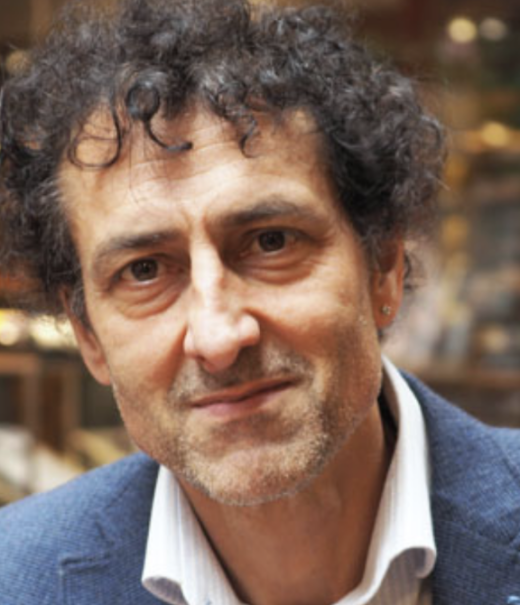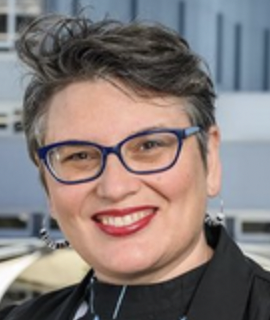This is the second day in a series of posts on education priorities for the 2025 federal election. Today’s posts are about why we need connected solutions.
The neologism ‘polycrisis’, a situation where several seemingly unrelated crises are occurring at once and where attempting to address one may have adverse effects on another, is currently receiving significant academic airplay. I was asked to write a short piece for AARE on the upcoming Federal election with a focus on ‘connected solutions’ and ‘building stronger alignment across sectors and policy portfolios’. It it seemed to be a relevant place to start in completing this task. However, it was soon apparent that if I followed the threads provided by various crises in and impacting on education this would become a very long piece. So instead, I have taken two projects I am currently working on, showing the interconnectedness between them, and indicating how they intersect with what, in my opinion, should be other policy priorities in the upcoming election.
Education crises: Teacher shortages and student attendance
There are multiple crises facing education. These relate, amongst other things, to teacher shortages, to the fair distribution of the academic benefits of schooling, and to providing young people with an adequate preparation for living in a complex and fast changing world. Education policy is needed to address these crises. For example, policy is required to consider how to make hard to staff schools more attractive places to work, to ensure that the curriculum is inclusive of difference, where young people are exposed to both powerful knowledges and also see their own community knowledges valued, and to ensure that school funding is targeted to favour schools and communities most in need.
Many of these crises intersect with each other. I am involved in two different ARC discovery projects, one looking at school attendance and another teacher shortages in hard to staff schools. While these projects are with different teams and have a different focus, the findings are overlapping. This can be seen for example in how the teacher shortages affect young people’s engagement with school.
The emotional impact of losing a teacher
In one focus group interview with Grade 11 students at a hard to staff school in a high poverty urban area, they spoke of the emotional impact of having a teacher they liked and to whom they could relate at the school on a Friday and then suddenly disappearing on a Monday. This impacts on young people’s engagement with school. One student in the group stated that:
You just don’t feel comfortable at school anymore … yeah, we’re expecting teachers to leave now because it’s so common.
And another from the same group:
It’s also a bit unmotivating because if the person that’s getting paid to do this doesn’t want to do it anymore, why would you want to go and do it as well?
Addressing the teacher shortage then is necessary to address young people’s engagement with schooling. But addressing student attendance and teacher shortages needs to go beyond education policy.
Many of the issues facing schools cannot be solved without addressing other issues occurring outside the field of education. I will give just two examples here. The point is that what is needed is a consideration of how the policy landscape across different fields can be worked together to solve educational problems.
What are we doing about the housing crisis and its impact on education?
In interviews with school principals in both ARC projects the housing crisis, for instance, has been raised as a serious issue affecting schools. In relation to attendance, principals have spoken about how insecure housing has led to young people constantly moving house and changing schools, and often falling through the cracks when it comes to monitoring attendance. One stated about their local community:
There are no rentals. People can’t afford it. We are averaging probably eight students, maybe in a week at the moment going to places where the rental is more affordable… biggest movement that I’ve seen in the community, since doing this job, and that’s the rental crisis. Most of the rent starts round about $500 a week, and for families who aren’t working, who are receiving Centrelink benefits, they can’t afford that… We’ve got homeless families on a waiting list for rental… It’s unreasonable to expect them to come to school because they can’t afford the bus fares. It’s too far for them to walk
Hard to staff, hard to house
In the hard to staff schools, principals also spoke about the difficulties of securing appropriate housing for teachers in the local area. (See Scott Eacott’s AARE blog Housing: how to fix the teacher shortage – EduResearch Matters). Many of the schools facing the biggest issue with attendance are also those that are the hardest to staff. Indeed, the lack of teachers, and the high turnover of staff have also been noted by principals in both projects as a factor that hinders student attendance. The housing crisis has become an issue in the current election, but we are not seeing the links being made to education, apart from the dubious association being made between international higher education students and the rental market.
What are we doing about toxic masculinity and its impact on schooling?
Much has been written recently about the Netflix series Adolescence and the lessons it provides about online safety and the dangers of online activity promoting toxic forms of masculinity (see the excellent AARE blogs by Sam Schulz and Sarah McDonald What happens when the manosphere goes to university – EduResearch Matters and Stephanie Wescott and Steven Roberts What schools should do now the manosphere thinks it’s back in charge – EduResearch Matters.
My first book in 2001, and subsequent work with Bob Lingard, Wayne Martino and Amanda Keddie, all explored the relationship between dominant forms of masculinity and violence and the implications for schooling. In that work we indicated the problems that confronted female students and teachers in schools. We argued, as many are now, that schools needed to be working to challenge those forms of masculinity that are now finding fertile ground for breeding on the Internet. However, while the Internet has facilitated the spread of such masculinities, we need to recognise that the problem predates the newly identified ‘manosphere’ and that all policy domains have continually failed to make significant headway in relation to gender, especially when it comes to violence. It’s time for that to change.
During the course of our work on the attendance project a principal pointed us towards an article in the State’s only statewide newspaper, the Courier Mail. The article provided an account of life for teachers in one remote Queensland high School where:
15 per cent of staff at (the high school) had reported experiencing bullying, sexual harassment… staff members claimed there was a culture of workplace violence and sexual harassment which had led to an exodus of staff. (1st September, 2022).
The frustrated student
In an interview with a principal, on that same project, we were told about a grade 8 student who was living in a ‘domestic violence’ situation. The principal indicated that this student, who could ‘barely read’, sat in class feeling ‘frustrated’, ‘stupid’ and ‘inadequate’. And then:
Someone says something to him, and he goes out and he thumps someone… this has happened multiple times
In the 2022 election, gender was firmly on the agenda. In the 2025 election it has been less so. However, given the ways in which politics are shaping up in the US with the rise of the new right and outright misogyny (alongside racism, homophobia and transphobia) establishing itself as an acceptable political discourse, and the ways in which these discourses travel, it should be a major agenda item.
Teachers, especially female and non-binary teachers, deserve this. Or they will not stay in the profession. Young people who are the target of violence in schools, especially for being ‘different’, will not attend or engage with school if we don’t. Young people growing up in home environments where violence is common practice, will have their education affected by that violence (although it should be noted that for some young people, school can be their only safe space). Addressing gender-based violence as a policy priority will be good for all and for education.
I hope politicians are reading AARE blogs in the lead up to the 20225 Federal election
What I wanted to come across in this piece, by way of example, is that schools are regularly having to deal with crises that are not of their own making (as indicated by Naomi Barnes in her AARE blog Schooling now in a crisis: Inky darkness, crippling anxieties, overreactions, love, care and glorious beauty – EduResearch Matters. As such education policy needs to be joined up, connected, and there be real effort across policy sectors to build stronger alignment between different policy portfolios. As I was putting this piece together, I found myself continually revisiting the EduResarch Matters website, and it struck me that if politicians in different portfolios wanted to see how their responsibilities connected with education, there could be no better place to start than on this website.

Martin is a Capacity Building Professor in QUT’s School of Education. He is a former president of AARE. He researches in the area of social justice and education.










